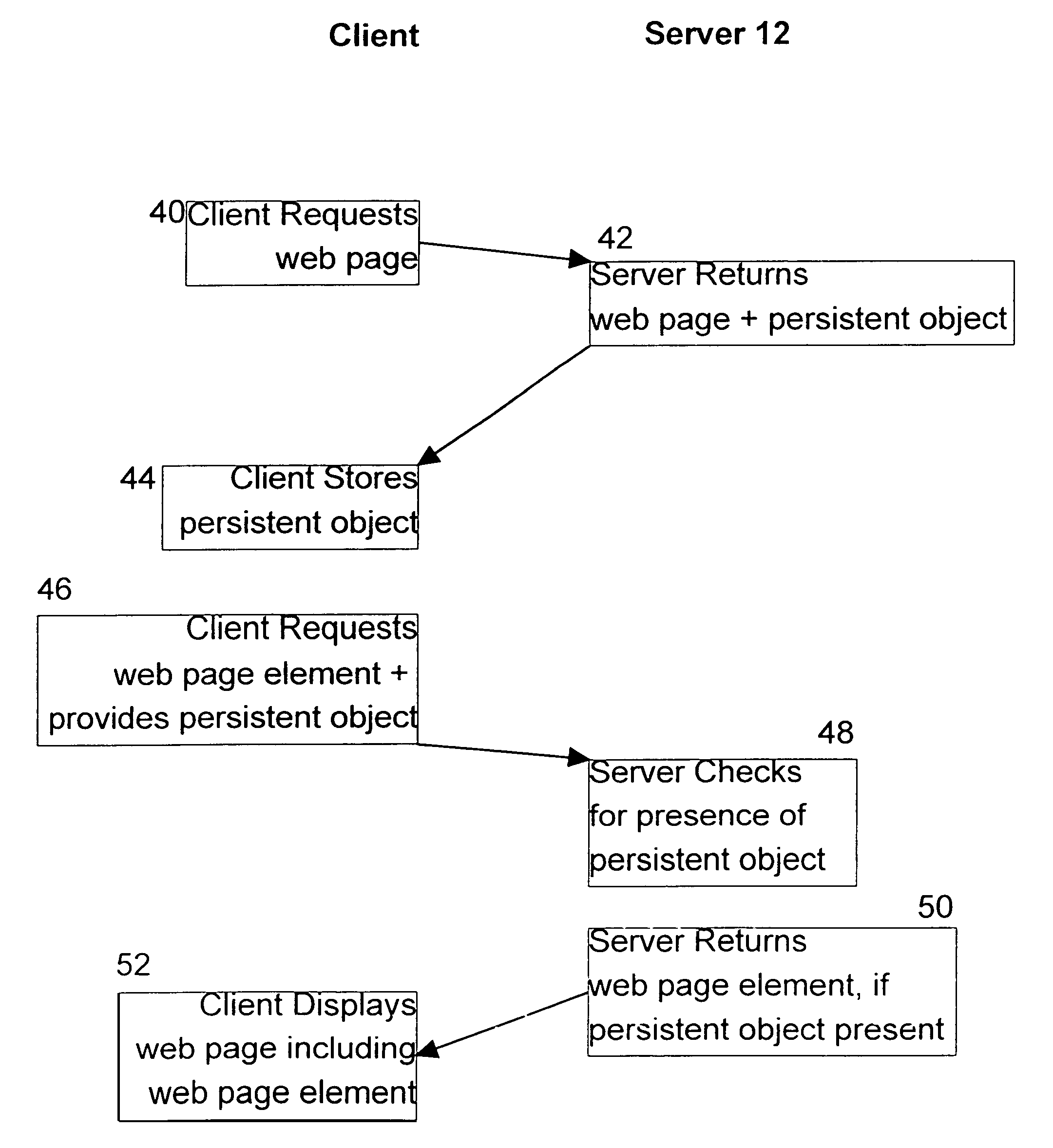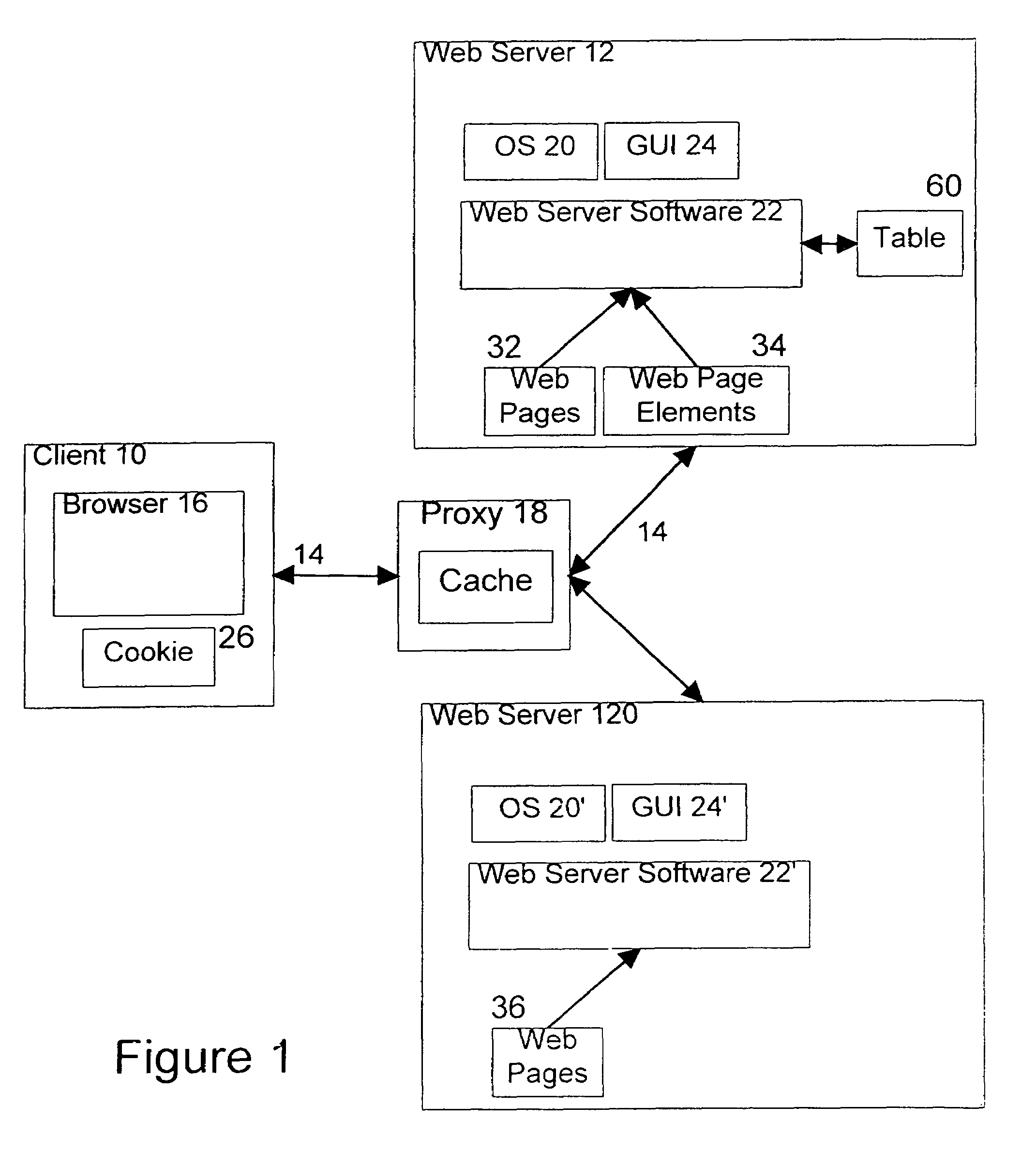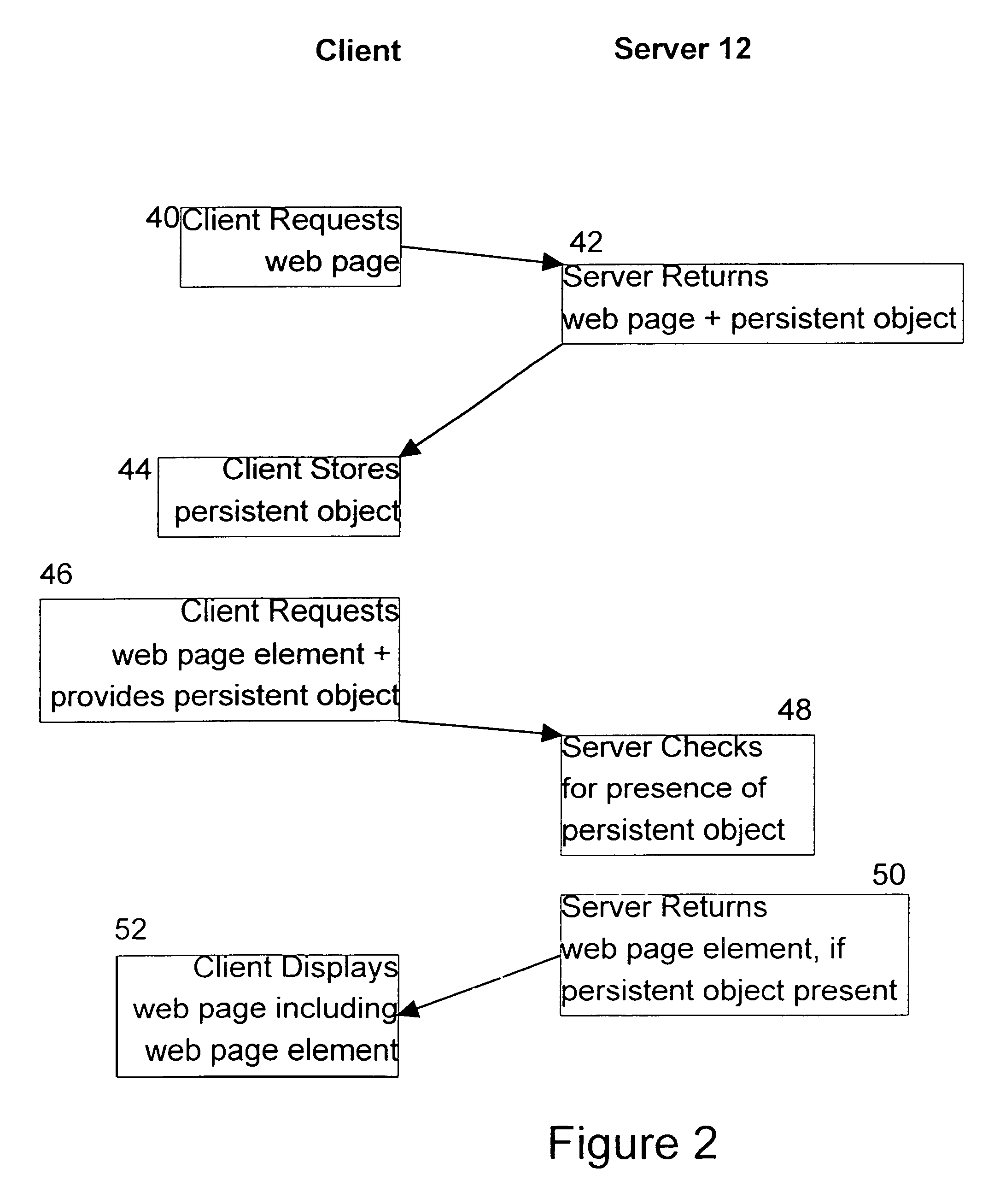Method for preventing parasitic usage of web page embedded files
a technology for embedded files and web pages, applied in the protection of program/content, television systems, instruments, etc., can solve problems such as inability to download these elements correctly
- Summary
- Abstract
- Description
- Claims
- Application Information
AI Technical Summary
Benefits of technology
Problems solved by technology
Method used
Image
Examples
first embodiment
[0019]The client / web server connection may either be direct or may be via one or more proxy servers 18, although in the first embodiment, the proxy 18 simply relays requests and responses along the channel 14 in a conventional manner. For illustrative purposes, channel 14 is the Internet, an Intranet or other known connection. In the case of the Internet, Web servers 12, 120 are only two of a plurality of web servers which are accessible by clients, one of which is illustrated by machine 10. A client machine includes a browser 16, which is a known software tool used to access the web servers of the network. By way of example only, a client machine is a personal computer. Representative browsers include, among others, Netscape Navigator (all versions), Microsoft Internet Explorer (all versions) or the like, each of which are “off-the-shelf” or down loadable software programs (Internet Explorer is a trademark of Microsoft Corporation).
[0020]A representative Web Server 12 comprises an ...
second embodiment
[0033]In the present invention, it is the web server 12 that keeps track of a client's request for web pages 32 on the web server storing the web pages elements 34, rather than the client retaining a Cookie.
[0034]In this case, the web server software 22 stores the TCP / IP address of each client accessing a web page on the web server 12 as an entry in a table 60. Preferably, an entry date or expiration date is associated with each TCP / IP entry in the table 60, so that a clean-up thread or process can asynchronously run over the table and delete entries where the last client access to the web server 12 took place more than a pre-determined time beforehand. When the software 22 receives subsequent requests for web page elements 34, the software 22 checks the table 60 to determine if the request for a web page element is coming from a client TCP / IP address in the table. If so, the web page element is returned to the client and if not, the web server 12 can again either refuse to send the...
third embodiment
[0037]In a third embodiment, a conventional browser needs to be adapted to implement or assist in implementing the invention. In the first variation of this embodiment, the adapted browser 16 parses a web page for display as normal. On encountering a reference to a web page element, the browser alone decides whether or not to make the request for the web page element based on whether or not the element resides on the same web server as the web page. If a web page element is from the same web server as the web page, a HTTP Get request is made and the returned element displayed. If not, then the browser either leaves the element display blank, as if the web server had not responded to a web page element request, or the browser displays a message or image warning the user that the web page may be from a counterfeit web server.
[0038]This of course is quite a crude mechanism as, unlike when the decision is made by the web server 12, the browser has little idea whether or not references t...
PUM
 Login to View More
Login to View More Abstract
Description
Claims
Application Information
 Login to View More
Login to View More - R&D
- Intellectual Property
- Life Sciences
- Materials
- Tech Scout
- Unparalleled Data Quality
- Higher Quality Content
- 60% Fewer Hallucinations
Browse by: Latest US Patents, China's latest patents, Technical Efficacy Thesaurus, Application Domain, Technology Topic, Popular Technical Reports.
© 2025 PatSnap. All rights reserved.Legal|Privacy policy|Modern Slavery Act Transparency Statement|Sitemap|About US| Contact US: help@patsnap.com



